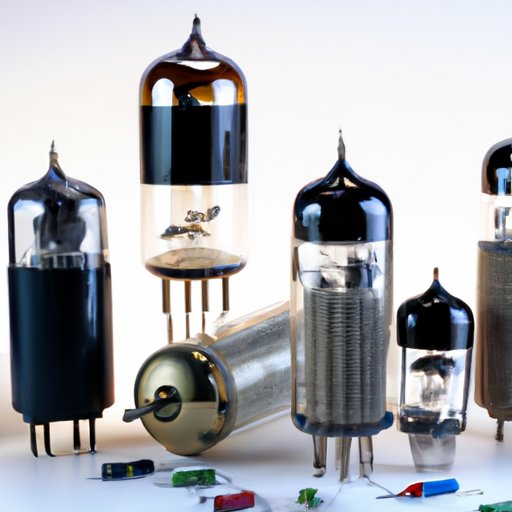Introduction
Vacuum tubes were an important part of early electronic devices, providing amplification and switching capabilities. However, these devices were bulky, inefficient, and expensive to maintain. As a result, a new technology was needed to replace them. This article will explore what invention replaced vacuum tubes and the impact of solid-state technology on this process.
A Historical Look at the Replacement of Vacuum Tubes by Solid-State Technology
The development of vacuum tubes began in the late 19th century as a way to detect electrical signals in telegraphs. Over time, vacuum tubes became more advanced and were used in a variety of electronic devices such as radios, televisions, and computers. Despite their popularity, vacuum tubes had several drawbacks that made them impractical for modern applications.
The primary reason for replacing vacuum tubes was their inefficiency. Vacuum tubes required a large amount of power to operate and generated a lot of heat. This made them difficult to use in small, portable devices. Additionally, they were unreliable and prone to failure due to their fragile nature. Finally, they were relatively expensive to manufacture and maintain.
Solid-state technology was developed in the 1950s as a way to improve upon the limitations of vacuum tubes. Researchers found that by using semiconductors such as silicon and germanium, they could create components that were smaller, cheaper, and more reliable than vacuum tubes. These components could be used to create integrated circuits, which allowed for more complex electronics to be created.
Exploring the Impact of Solid-State Technology on the Replacing of Vacuum Tubes
Solid-state technology had a number of advantages over vacuum tubes. First, it was much smaller and more efficient, allowing for the creation of smaller and lighter electronic devices. Second, it was cheaper to produce and maintain than vacuum tubes, making it more cost-effective for manufacturers. Third, it was more reliable and less prone to failure than vacuum tubes. Finally, it was faster and could handle more complex tasks.
Despite the advantages of solid-state technology, there were still some challenges when it came to replacing vacuum tubes. For example, engineers needed to find ways to incorporate the technology into existing designs and develop new methods for testing and troubleshooting. Additionally, the technology was not well understood at first, so it took some time for engineers to become familiar with it.
A Comparison of Vacuum Tubes to Their Modern Replacements
Vacuum tubes come in a variety of shapes and sizes, but all of them are based on the same principle: they contain a vacuum and two or more electrodes. The vacuum allows electricity to flow between the electrodes, creating an amplification or switching effect. Modern replacements for vacuum tubes, such as transistors and microprocessors, work differently. Transistors are composed of three layers of semiconductor material and can be used to amplify or switch signals. Microprocessors are composed of millions of transistors and can be used to perform complex calculations.
How Transistors, Microprocessors and Other Technologies Replace Vacuum Tubes
Transistors are one of the most common replacements for vacuum tubes. They are smaller, more efficient, and more reliable than vacuum tubes, making them ideal for a wide range of applications. Additionally, transistors can be integrated into integrated circuits, allowing for the creation of more complex devices. Microprocessors, another type of integrated circuit, are composed of millions of transistors and can be used to perform complex calculations.
In addition to transistors and microprocessors, other technologies have been developed to replace vacuum tubes. Digital logic circuits, for example, use combinations of transistors and diodes to create complex logic functions. Field-programmable gate arrays (FPGAs) are another type of technology that can be used to replace vacuum tubes. FPGAs are programmable chips that can be configured to perform specific tasks.
Conclusion
Vacuum tubes were once a key component of many electronic devices. However, their bulky size, high power consumption, and unreliability made them impractical for modern applications. As a result, they were replaced by solid-state technology, which offered greater efficiency, reliability, and cost-effectiveness. Transistors, microprocessors, and other technologies have since been developed to further replace vacuum tubes. These technologies have enabled the development of smaller, more powerful, and more reliable electronics.
The replacement of vacuum tubes with solid-state technology has provided numerous benefits. It has allowed for the creation of smaller, more powerful, and more reliable electronic devices. Additionally, it has made electronics cheaper and easier to maintain. Finally, it has enabled the development of more complex electronics, such as microprocessors and digital logic circuits.
(Note: Is this article not meeting your expectations? Do you have knowledge or insights to share? Unlock new opportunities and expand your reach by joining our authors team. Click Registration to join us and share your expertise with our readers.)
